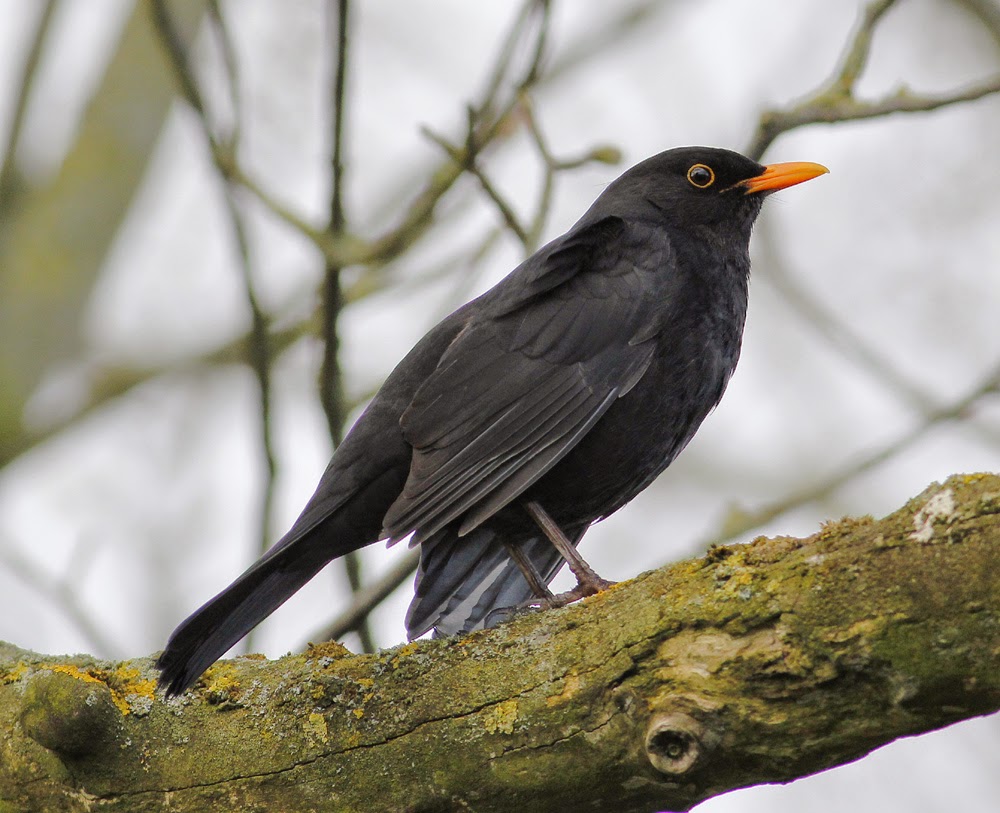A bright, sunny start but with still the nagging northerly that’s holding up a flood of birds just south of here. There was a hint of finches on the move this morning, nothing too obvious just a few Lesser Redpolls flying over, Siskins high in the trees and a Brambling, the latter a good find for April.
I’d started at Fluke Hall, checked the sea wall for Wheatears and pipits of which there were none but noted small numbers of both Linnets and Goldfinches moving along the hedgerow and the sea wall.
There seemed to be little genuinely “on the move” as distinct from local birds, so I then quietly searched the woodland and woodland edge as far as the “Keep Out” signs allowed, hoping for maybe a Ring Ouzel - just Blackbirds of course.
Blackbird
Bramblings have such a distinctive, nasal, wheezy call that if one or more is about there is no denying it. Likewise Lesser Redpolls and Siskins, two members of the finch family which have also have highly characteristic and unmistakeable calls. All three species were moving through the tree tops but I managed to see a Lesser Redpoll only. Into the notebook went “one” of each although later at Lane Ends there would be 3 Lesser Redpolls and 2 Siskin to add to the resident Chaffinches.
Brambling
Also here at Fluke Hall, a resident Pied Wagtail, singing Chiffchaff and Willow Warbler, 1 Great-spotted Woodpecker, a pair of Kestrels at the box and 1 Little Egret on the marsh.
The maize fields which have proved a magnet for many birds during the winter have now dried to such an extent that they have been ploughed in preparation for planting with the result that the few birds which remain consist of several pairs of Shelduck and Lapwings.
Lane Ends produced the aforesaid Lesser Redpolls and Siskins, 2 Jays, singing Chiffchaff and Willow Warbler, 2 Little Egret and 2 Little Grebe.
At Pilling Water - a Grey Heron, the Green Sandpiper, 15 Redshank, 1 Little Egret and on the marsh still 450+ Pink-footed Geese. Otherwise the birding was extremely quiet and unproductive and a change of wind direction would help bring in more migrants.
Grey Heron
There are more birds and birding from Another Bird Blog very soon. Call in again for a full of activity time.
Linking today to Anni's Birding Blog and Eileen's Saturday Blog.
Linking today to Anni's Birding Blog and Eileen's Saturday Blog.
































































